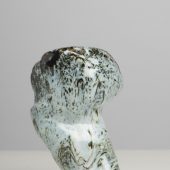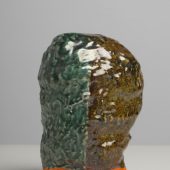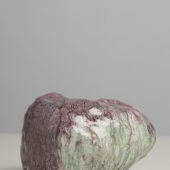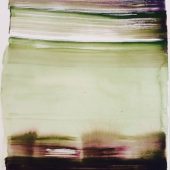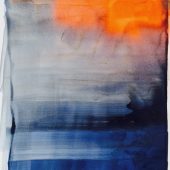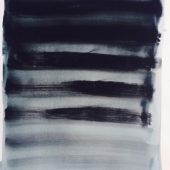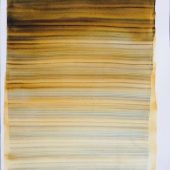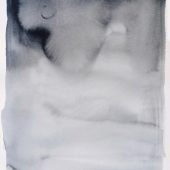Pots
by Steve Reinke
Earlier ceramic works were small, animal-shaped. They asked to be held in the palm of your child- or adult-sized hand. Like figurines, they wanted to be collected, to make a family, a zoo, a chess set. They didn’t speak, but could be voiced. You could arrange them, play with them. They didn’t want to be alone, but to form little anti-social clumps. Children hate their toys, mostly. But their hatred is what keeps them human, capable of having an interior life. They know their toys are hollow and cannot hate them back.
The best thing is to come across some other body that bears your wound. There is no reason, absolutely, for a particular psychic wound to manifest as a physical wound on the same, lone body. What is empathy for? Or identification? Projection? Partial objects? To allow us to find ourselves in the wounds of others. The wounds borne by others.
Jesus bleeds so gentle, discrete, coagulated blood-beads: ceramic glaze.
The degree of my contempt for the poetry of Dylan Thomas equals my inability to not have certain lines float to consciousness. For instance, people, I recommend that you go as gently as possible into that good night. Otherwise, things get ugly, ridiculous ugly. And what about the force that drives the flower through the green fuse? More power in the gash.
I’d expected Mott’s new work to be an extension of her earlier, but it is not. It is a decisive break. These new works cannot be pathologised, infantilised. They avoid, despite their references to the body (and they are all busts or torsos, organs, lumps) any easy anthropomorphisation. They are not personages. They are objects without psychology. They do not think, breathe, feel or speak. But they are objects, mute objects that do not care to engage with us. They are above us, already dead, already deity.
They are beyond perversity. These deities do not exist as toy screens for our insipid projections (though I love that work too, for instance, the cartoons I make with Jessie). But these ceramics are mythological rather than psychological. These stupid lumps of clay with even stupider glazing are more stable than we are, and more inscrutable. They are objects to be worshipped, or contemplated, if you take contemplation as a kind of worship, as you should.
(b. 1980) Jessie Mott’s practice encompasses a variety of media including painting, drawing, sculptural objects, and writing. Often the work employs a menagerie of human, animal and celestial forms, otherworldly anatomies in various states of being. Mott has exhibited her work widely; collaborative animations with artist and writer Steve Reinke have been screened at national and international venues including the International Film Festival Rotterdam, VIDEOEX International Experimental Film & Video Festival in Zürich, Switzerland; the International Short Film Festival Oberhausen, Germany; and the Sydney Underground Film Festival. Her drawings were featured in Reinke’s video program in the 2014 Whitney Biennial. Mott received an MFA in Art Theory & Practice from Northwestern University and a BFA from New York University.
